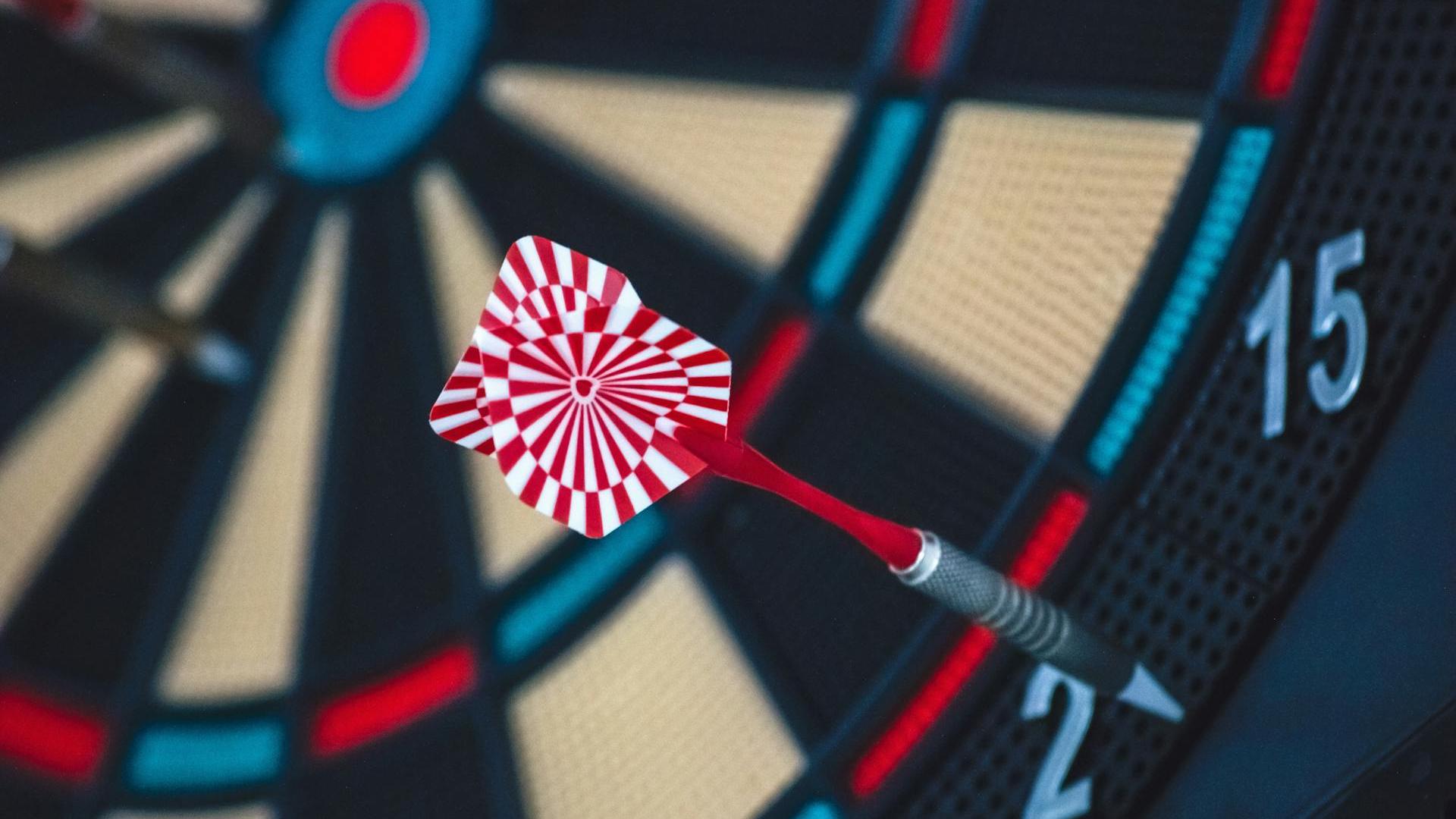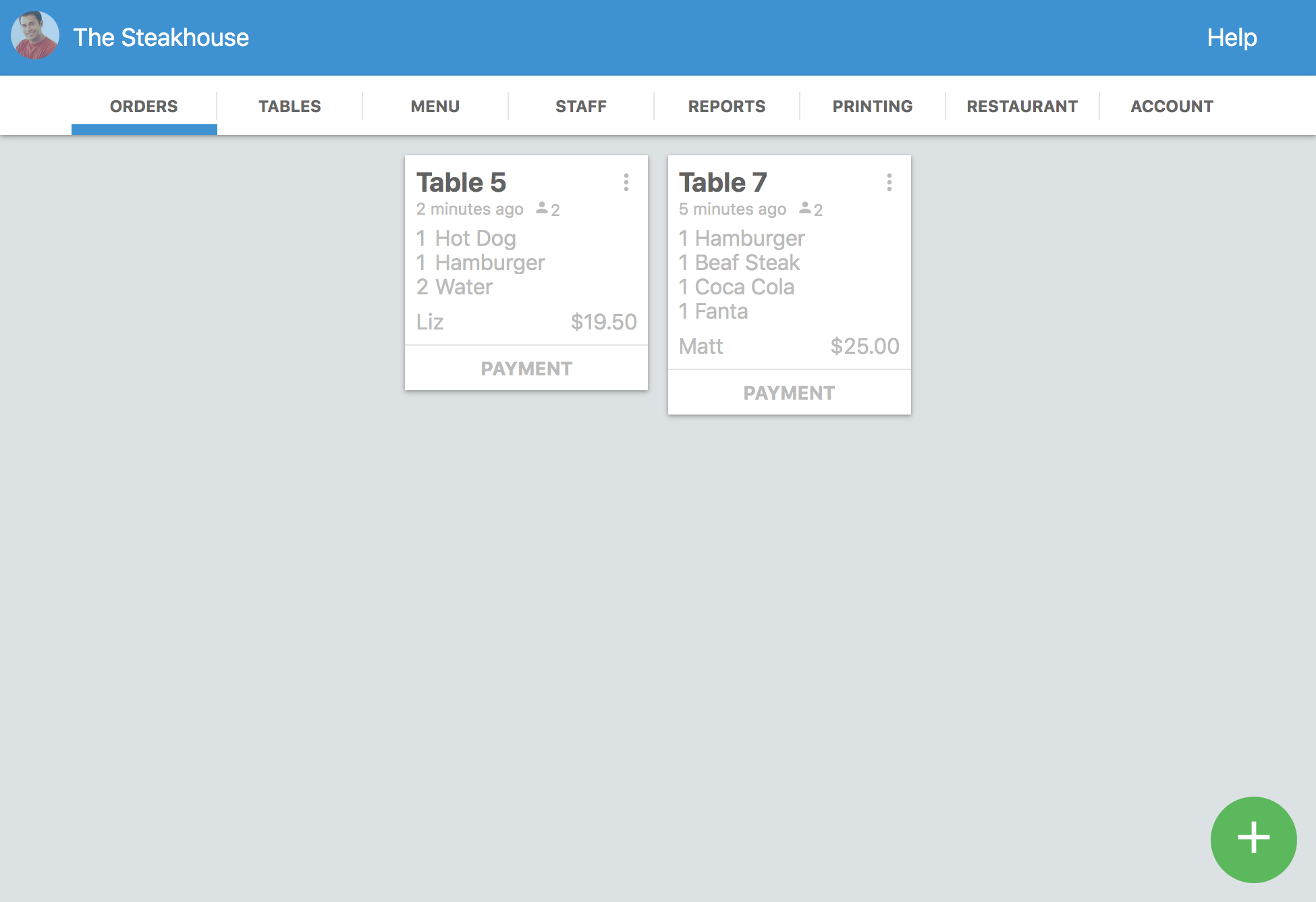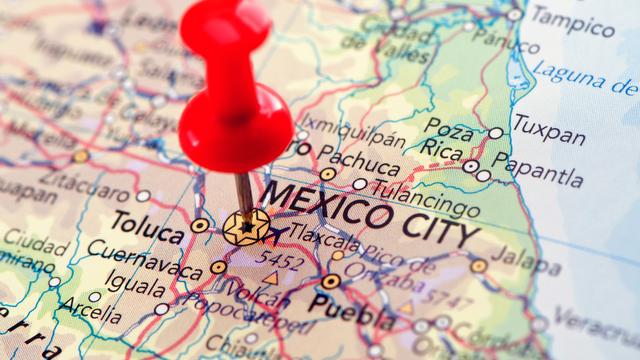Running a restaurant takes a lot of attention to detail and effort. And that’s not it, because if you want to do it right, you must also keep updating your efforts with different strategies. That includes marketing, business strategies, and menu offers, among others. If you’re not updating your restaurant’s strategies or don’t know how to do it, you came to the right place.
In this article, we’ll go over the following topics:
- The importance of updating and diversifying different strategies in your restaurant
- What are the different steps you can use to update each strategy?
- And the consequences you’ll avoid by doing so
This article will also link to several others we’ve created over the years for our blog. All of these resources will help you optimize and change the way you do business, which is sure to improve the overall performance of your restaurant on different fronts. Let’s get into it!
Why Is It Important for Restaurants to Diversify and Update Their Strategies?

You’d be surprised by the number of people who think less of restaurants and similar types of businesses, mostly because they’re not usually easy to automate. Considering every aspect restaurants must consider to operate efficiently, that’s a correct assertion. Restaurant managers and owners must consider the following aspects to operate a business with the best possible profitability and efficiency:
- Menu engineering: designing a profitable and appealing menu
- Cost control: tracking food and beverage costs and making adjustments as needed
- Inventory management: ordering the right amount of inventory to avoid waste every month
- Food preparation: developing efficient food preparation procedures
- Kitchen management: using technology to streamline kitchen operations
- Scheduling: creating efficient staff schedules that match customer demand
- Training: Train staff on all aspects of the restaurant operation.
- Performance management: setting clear expectations for staff and providing regular feedback
- Compensation and benefits: offering competitive wages and benefits to attract and retain staff
- Layout: designing the restaurant layout to maximize efficiency and customer flow.
- Equipment: investing in high-quality equipment that is easy to use and maintain
- Technology: Using technology to streamline operations and improve customer service
- Maintenance: Developing a regular maintenance schedule for all equipment and facilities
- Branding: developing a strong brand identity that reflects the restaurant's unique selling proposition.
- Marketing: Using a variety of marketing channels to reach potential customers
- Sales: training staff on how to upsell and cross-sell customers.
- Customer service: training staff on the importance of excellent customer service Also, establish clear customer service standards and collect feedback to improve them.
Keeping up with all these is not easy, especially if the responsibility falls on your lap alone. But that’s not the worst part—all of these aspects of the restaurant business are constantly changing and adapting to different economic and consumption trends and patterns and generational mindset shifts. If your restaurant doesn’t keep up with these trends, strategies that were near-perfect the previous year (or month) can become highly inefficient and even detrimental to your business.
Consequences of Not Diversifying Restaurant Strategies

Let’s discuss how stagnant or outdated restaurant strategies can affect your business negatively:
- Decreased profitability
- Increased food and beverage and labor costs
- Food spoilage and waste
- Decreased food quality
- Increased risk of food poisoning
- Increased risk of accidents and injuries
- Overstaffing or understaffing
- Decreased employee morale
- Increased turnover
- Decreased employee knowledge and skills
- Increased errors and mistakes
- Reduced customer satisfaction and failure to meet customer demand
- Difficulty competing with other restaurants
- Difficulty attracting new customers
- Decreased efficiency
- Loss of brand identity
- Decreased customer awareness
- Decreased customer reach
- Decreased sales
- Increased customer complaints
- Loss of repeat customers
Keep in mind that those are the first line of consequences that will affect the restaurant. There are other consequences, like firing employees to reduce labor costs or reducing schedules, among others; these can worsen to the point of being forced to close the business.
How to Know if You Must Update a Specific Strategy

If you’re applying good techniques to keep up with the restaurant’s performance and also keeping an eye on the different processes that take place in the business, you’ll notice the signs. That’s easy to do for the physical aspects of the restaurant, such as the cleanliness in different areas, the effectiveness of inventory management systems, and equipment maintenance, among others. That’s because they’re easy to see—you'll notice if an area needs better cleaning practices, which also means you probably must train your staff again to improve or solve the issue. However, it’s much more difficult to notice when there’s room for improvement in the following areas:
- Marketing
- Food and beverage costs, labor costs, and supplier relationships
- Menu engineering and promotions
- Front-of-house staff and customer service
These areas are a bit more difficult to handle because they are more nuanced; you must have a good eye for detail to understand if there’s underperformance. You must also have different points of reference to manage marketing and cost control successfully. That means knowing the prices of various suppliers if there are significant changes in food cost trends and even having access to sales and marketing metrics of similar businesses or updated data provided by trustworthy sources. Of course, you must adapt to these changes and apply relevant cost-cutting strategies when necessary.
Benefits of Updating Restaurant Strategies Effectively

On the other hand, several benefits of updating your strategies prevent all the previously mentioned consequences and putting your restaurant in a better position for growth. Below, we'll cover each of the benefits associated with updating different strategies you should be using in your restaurant, as well as the steps you can follow to do it safely. We'll cover the most difficult ones, which are marketing, food costs and pricing, menu engineering and promotions, and front-of-house staff and customer service.
1. Restaurant Marketing
If you've been running a restaurant for a while, you should already have a good understanding of the impact that marketing has on sales. However, restaurant marketing can be surprisingly difficult to handle, especially if you're applying several marketing strategies across multiple channels. On our blog, we've covered a variety of marketing strategies that you can apply in a restaurant:
- Collaborations and partnerships
- Content marketing
- Email marketing
- Influencer marketing
- Social media marketing
We've also covered more specific topics, such as:
- Marketing for new restaurants
- Digital marketing ideas
- How to use customer feedback for marketing purposes
- Marketing strategies for food trucks
- Marketing strategies for bars
One thing that all of these articles have in common is that we almost always recommend that you never let your marketing strategies drift aimlessly and unsupervised. You should also track the results that they bring in. This will help you determine whether you have met your objectives, whether you need to set new ones, or whether you should scrap a specific strategy altogether. If you have done this, you already have everything you need to revamp your marketing strategies by following the steps below.
How to Update Your Restaurant’s Marketing Strategies

The following steps describe what you must do to analyze and update a single marketing strategy you’re using in your restaurant. If you are applying several strategies, you’ll have to apply the same process for each to update it. Additionally, keep in mind that there’s always the option of stopping a marketing strategy or campaign altogether. This is crucial if you have at least two strategies and realize one is bringing a much higher volume of customers to your restaurant. That way, you can optimize the investment you’re making in marketing as well as cut costs on this aspect of your business.
1.1 Study Your Marketing Strategy and Its Results, Among Other Details
This step is pretty simple; you must look at the data provided by a specific marketing strategy using the right tools. Here’s a quick example using a website. A website is a great tool because it can give you insights into the way your marketing strategies convert into sales. To study this tool, you should look at the website’s traffic and how that correlates to online sales and their impact on restaurant profitability. Here are the steps you must follow to do so effectively:
- Gather data: Use web analytics tools to track website traffic, including page views, unique visitors, and bounce rates. Also, track online sales data and restaurant profitability data. This can be done easily if your POS system is equipped with an online storefront.
Note: Waiterio’s POS has that and more features;learn more about it here.
- Segment the data: Segment the data by different dimensions, such as traffic source, device, and landing page. This will help you identify which marketing channels and strategies are driving the most traffic and sales. This is especially useful as a metric for other marketing strategies, such as social media and the traffic they produce that’s directed to your online storefront.
- Analyze the data: Compare the data from different segments and periods to identify trends and patterns. For example, you can compare traffic and sales data from different marketing campaigns to see which campaigns are most effective.
You should also ask yourself the following questions:
- Which marketing channels are driving the most traffic and sales to the website? For example, you can check how many visitors come to the website from social media, search engines, and email marketing.
- Which landing pages are converting the most visitors into customers? Check which pages on the website are most likely to lead to online sales.
- Which products or services are the most popular online? Learn which menu items or other products are selling the best online.
- How do online sales correlate to overall restaurant profitability? You can compare online sales data to other restaurant data, such as dine-in sales and food costs, to see how online sales are impacting the overall bottom line of the business.
In addition to the above steps, you can also use customer surveys and feedback to get insights into the marketing strategy. For example, you can ask customers how they found out about the restaurant and what made them decide to visit.
1.2. Study Your Customers, Target Audience, Competitors, and More

Now that you know the state of your marketing strategy, you can look at your customers and target audience to gather even more information. When you look at the information above and compare different periods and their performance, you’ll notice there are significant changes in consumer behavior. You can also notice if there’s a sudden drop in profits, which is the worst way of noticing a change. The information described above is the consequence of a change or a new trend, which you must identify to apply the correct solution. Here’s an example:
Imagine you noticed a decline in website traffic. You investigate segmenting the data by traffic source and discover that traffic from social media has decreased significantly. You then analyze your social media presence and find that your social media posts are outdated and irrelevant, and you haven't been engaging with your followers. Your social media marketing strategy is no longer effective.
1.3 Optimize, Update, and Add New Marketing Channels to Your Strategy
When you go through the previous steps, you’ll likely come up with some ideas on how to improve your marketing strategies, fix mistakes, and, if the problem is unsolvable, stop using the marketing channel. Also, the specific example we shared is very relevant because it allows you to look into several marketing strategies at the same time since they are correlated to the effectiveness of your online storefront and website. After making the changes, there’s nothing left but to keep up with the results they generate and start the process again after one to three months.
2. Promotions and Menu Engineering

Promotions and menu engineering have a huge impact on sales, profitability, and marketing. They can be difficult to manage if you're balancing multiple strategies and goals, especially if you don't use the right tools, such as a good POS system that lets you categorize dishes, modify menus on the go, and create different menus for different days. All menu engineering and promotion strategies should be strategic and data-driven, but they also need to consider customer satisfaction. You may need to make some profit sacrifices for promotions, but you can take a little more risk with menu engineering. Regardless of which strategies you choose, it's important to track their results so you can see what's working and what's not. This information will help you refine your strategies and improve your results.
How to update your restaurant's promotional and menu engineering strategies
The best part of menu engineering and promotions is that they’re easy to change. That means if you’re not currently applying them, you can get started with little to no risk. We’ve talked about several topics related to menu engineering and promotions in the following articles:
- Menu Engineering 101
- Menu engineering as a marketing tool
- How to make a menu for your restaurant
- 6 creative promotion ideas to attract customers
- How to create effective promotions
We’ve also created several articles related to the creation of restaurant menus:
- How to add plant-based foods to your menu
- Restaurant Menu Innovations in 2023
- Restaurant menu design
- QR-code restaurant menus
- Types of restaurant menus
- How to create a healthy menu for kids
All of these resources can help you create the most amazing menu possible for your restaurant. Also, they can help you update and change it with different ideas and menu engineering practices. Finally, to make this all the more effective, you must also study the performance of your menu. Having a restaurant POS with an integrated digital menu that shows your best-performing dishes can help a lot!
3. Customer Service and Staff

There’s a clear relationship between the quality of your service and the front-of-house staff of your restaurant. They are in charge of providing the best possible service to every customer without any type of bias and using top-notch practices to satisfy your clients. Any kind of mistake can cause your restaurant to lose one or more customers, which will directly affect the profitability of your business. Considering how important customer retention is for restaurants, offering proper customer service is vital. Additionally, front-of-house staff is usually in charge of receiving customer reviews, complaints, and feedback. If you don’t build a good relationship based on trust with your waiters, they might not inform you if the quality of service drops—they'll plead with the Fifth to avoid losing their jobs! That’s why you must focus on creating excellent customer service training and guidelines, train your employees, and be careful when hiring for a new position. There’s another thing you must consider: times are changing, and so are hiring practices and the mindset of this new generation’s workforce. Creating a positive work environment, providing growth opportunities, having clear job descriptions, and receiving fair compensation are more important nowadays than ever. Adapting to these changes might be the difference between having a fully staffed and consistent restaurant and one struggling to reduce turnover rates.
How to Diversify Your Restaurant’s Customer Service and Staffing Strategies
Once again, we’ve covered these topics widely on our blog. Here are several articles that can help you reduce your restaurant’s turnover rates and improve staff retention:
- Hiring and maintaining a good FOH staff
- How to deal with a restaurant’s staff shortage
- A full guide to restaurant staff management
We’ve also covered customer service in several articles:
- How to use surveys to improve customer service
- Types of restaurant customers
- Types of restaurant service
Remember this: the happier your staff is working in your restaurant, the better they’ll treat your customers. If your customers aren’t happy with the service, take a look at your staff and ask them if they’re happy with their jobs. In some cases, the solution is just an hourly rate raise. In others, you might have to find replacement staff. On the other hand, if your FOH staff is happy, you can also take a look at your BOH staff, though this is rarely the cause of poor customer service.
4. Cost Management and Pricing

Cost management and pricing are closely related; the pricier the food and ingredients you buy, the less profit you make. This is one of the key aspects of running a successful and profitable business, but it’s also one of the most complex ones. There are way too many variables to keep up with. You must consider the following:
- Cost of food and ingredients
- Labor costs
- Overhead costs
You must also consider things like different pricing strategies, how much your customers are willing to pay, your concept, menu engineering practices, portions, and promotions, among others.
How to Update Your Restaurant’s Pricing and Cost Management Strategies
Check out the following articles to delve deeper into the topic of restaurant cost management:
- Analyzing restaurant costs
- How to reduce costs in your restaurant without sacrificing quality
- How to calculate food costs
Some of these articles also cover the topic of pricing, but that’s not their main focus. Below, you’ll find useful steps to identify if you must update the pricing strategy of your restaurant and how to do it effectively.
- Track your costs and sales. This will help you to understand your profit margins and identify areas where you may be able to improve profitability. Pay special attention to your best-selling menu items and worst-performing items, as well as the profitability of each dish. You should also take a look at the prices of other menu offerings, such as beverages, alcoholic drinks, and extras.
- Analyze your menu. Look at your menu’s variety and portion sizes to make sure that they are aligned with your pricing goals. You might be able to optimize the variety of your menu from different perspectives, including prices, type of dish, and size variations of the same dishes. Reducing portions is a viable way of reducing food costs.
- Take a look at your recipes. Managers who don’t have culinary experience or education often overlook recipes. However, they can give you vital insights into the cost of food and price setting. This will also allow you to modify recipes effectively while maximizing quality and optimizing processes to lower waste.
- Compare your prices to those of your competitors. Are you charging more or less than your competitors for similar dishes? You should also try their food to study differences in quality, portion sizes, and pricing.
- Get feedback from customers. Ask your customers what they think of your prices and if they feel like they are getting good value for their money.
- Set profit goals. Having goals for your business is vital! Check out our guide on how to set goals for your business.
- Apply the changes and repeat the process. Once you go through these steps, you can start applying menu engineering techniques.
Note: Make sure to establish effective measuring tools to get accurate results from these strategies.
Updating Your Restaurant Strategies Gives You a Competitive Edge

Through the years, we’ve realized what determines if restaurants are successful: attention to detail and an outstanding work ethic. Attention to detail allows you to notice changes in the performance of your restaurant. Hard work allows you to pay attention to detail at all times and also helps you make the necessary changes when they’re needed, regardless of their difficulty. Keeping your restaurant up-to-date with the best strategies and management techniques in different areas gives you a huge advantage and prepares your restaurant for success. But you have to work both hard and smart. Do you think you have what it takes?




